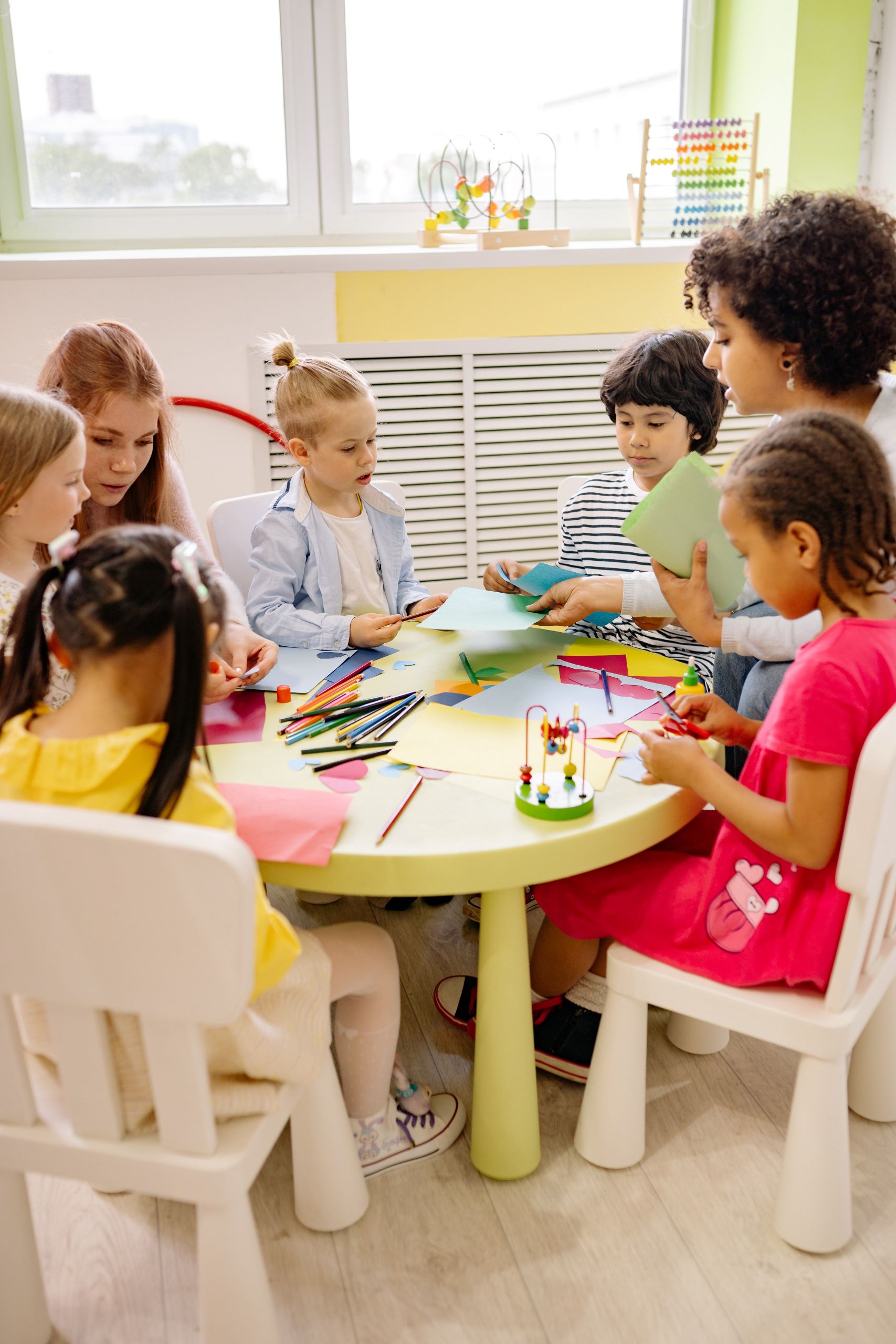The school bell rings, backpacks are packed, and classrooms are buzzing with excitement. For some children, returning to school after a long break can be an exciting experience, and for others, it can be quite daunting. Whether it’s due to anxiety, academic pressures, uncertainty, or simply the struggle to get back into the routine, parents and educators play a pivotal role in easing this transition. Outside of school, here are some other examples of situations that children may view as transitions that adults may fail to realize are difficult:

- Bedtime
- Mealtime
- Naptime
- Morning routine (getting to school, daycare, etc.)
- After mealtime
- First day of school or a special day of school (field trip, holiday party, class assembly, etc.)
- Leaving a preferred activity or space (play space, playground, etc.)
- New life component: new sibling, moving to a new home, starting a new school or daycare, starting a new classroom, changing teachers or acquiring a new personal aide or therapy practitioners, medical provider, etc.
- New skill component: Moving from a toddler bed to a big kid bed, starting toilet training, teething, losing teeth, medical changes, etc.
- Leaving the home for an appointment
One effective method to assist children in returning to school is by using behavioral specific praise, one direction at a time, while having them repeat steps prior to engaging in the new activity/environment. In this blog, we’ll explore this strategy step-by-step, helping parents and teachers foster a positive and smooth reintegration to school life.
Step 1: Create an Effective and Positive Environment
The journey begins with setting a positive tone. Children can be like sponges, absorbing the energy and emotions around them. Start by creating an environment that radiates support. Greet your child with a warm smile, a reassuring hug, and words of encouragement. Tell them that you believe in their abilities and that they can have an effective day at school. Utilize the DBT skill, GIVE. G stands for be gentle, I – act interested in your child, V – validate your child, E – use an easy manner.
Step 2: Set Clear Expectations
Next, it’s crucial to give clear directions and expectations to your children. This can assist in children knowing what types of transitions they may encounter in a day and decrease some emotional and behavioral reactions to stimuli. This step involves breaking down the routine into manageable chunks and utilizing the Describe Skill from Mindfulness. It is important to describe objectively to increase clarity on your expectations for your child. For example, before leaving home, you might say, “First, we’ll get dressed. Grab your underwear, pants, shirt, and socks. Put them on.” Try not to give too many steps for some children, especially those with Attention Deficit Hyperactivity Disorder (ADHD). It can be overwhelming to some and they might miss something. Giving clear, step by step directions to child can reduce their stress response and your own on things going effectively within your family’s routine.
You can also give a quick summary of what your child can expect throughout their day as well. As an example, “We will be getting dressed, eating breakfast, then going to the store.” By outlining the plan, you provide a structured framework that helps children mentally prepare for the day ahead.

Repetition helps children internalize the steps and build confidence in their abilities. It additionally can assist them in getting your expectations into their long term memory. Encourage your child to repeat verbally each step of the routine to you before moving on to the next one. This repetition reinforces their understanding of the process and increases their sense of control. For example, ask them, “What’s the next step after breakfast?” This prompts them to recall the plan independently. If your child makes a mistake, remember the DBT GIVE Skill to correct the behavior accordingly. Don’t forget to praise the steps they did get correct! See below for more information on praise.
For some children, it could be effective to set a timer for each activity, giving a 5 minute warning for when the actual event/activity will change. For example, you need your child to get ready for school by 7:45 to leave by 7:50. Tell them, “we need to get ready for school. Please finish your breakfast, then put on your shoes, and grab your bag. I will set a timer when you have 5 minutes before we leave” Once the warning timer goes off, set another 5 minute timer so your child can be ready to go when you need. Depending upon the task, you may need to adjust the time for your child to get ready or begin earlier. Make sure to avoid abrupt transitions, these can cause emotional and behavioral upsets for your children.
Step 3: Repetition is Key
Repetition helps children internalize the steps and build confidence in their abilities. It additionally can assist them in getting your expectations into their long term memory. Encourage your child to repeat verbally each step of the routine to you before moving on to the next one. This repetition reinforces their understanding of the process and increases their sense of control. For example, ask them, “What’s the next step after breakfast?” This prompts them to recall the plan independently. If your child makes a mistake, remember the DBT GIVE skill to correct the behavior accordingly. Don’t forget to praise the steps they did get correct! See below for more information on praise.
Step 4: Use Behavioral Specific Praise
Behavioral specific praise is a powerful tool that can motivate and reinforce positive behavior. As your child follows each step of the routine, acknowledge their efforts with praise. For instance, when they finish breakfast, you can say, “Great job finishing your breakfast on time! You’re doing awesome!”; “I love that you cleaned your room without me even asking!”; or “It is amazing that you tied your shoes all on your own!” Positive affirmations boost their confidence and make them feel capable. Behavioral specific praise does not always have to be verbal! It can also be something like a hug, sticker, or a quick high five. This type of praise is a tool that facilitates encouragement and motivation for your child to continue to engage in the behaviors you want to see.
Step 5: Address Concerns and Fears
 Returning to school can trigger anxiety or fears in some children. Take the time to listen to your child’s concerns. Ask open-ended questions like, “Is there anything you’re worried about today?” This opens up a space for them to express their feelings. Acknowledge their concerns and offer reassurance and solutions when possible. Don’t forget to validate their emotions that this can be a normal response to starting something new and unknown. Attempt to put yourself in their shoes and recall what it was like for you to start a new job, new school, or go somewhere where you did not know anyone.
Returning to school can trigger anxiety or fears in some children. Take the time to listen to your child’s concerns. Ask open-ended questions like, “Is there anything you’re worried about today?” This opens up a space for them to express their feelings. Acknowledge their concerns and offer reassurance and solutions when possible. Don’t forget to validate their emotions that this can be a normal response to starting something new and unknown. Attempt to put yourself in their shoes and recall what it was like for you to start a new job, new school, or go somewhere where you did not know anyone.
Step 6: Celebrate Small Achievements
Throughout the morning routine, celebrate small achievements. Did they get dressed on their own? Did they brush their teeth without reminders? Recognize and praise these accomplishments. It fosters a sense of autonomy and encourages them to take ownership of their responsibilities.
Step 7: Reflect and Adjust
At the end of the day, reflect on the experience with your child. Ask them about their day, what they enjoyed, and if they faced any challenges. This reflection allows you to make adjustments to the routine and provide additional support if needed. It also reinforces the idea that their voice and feelings matter. This could also be an opportunity to implement mindfulness. Ask them to observe and describe objectively their emotions and experiences of the day.
In conclusion, assisting children in getting back into school using behavioral specific praise, one direction at a time, and having them repeat steps prior to engaging in the new activity is a nurturing and effective approach. It empowers children, builds their confidence, and eases the transition back to the school environment. By following these steps, parents and educators can create a positive and supportive atmosphere where children feel capable and ready to conquer the challenges of the school day.
About the Author
Alyssa Eichhorn (she/her), M.A., LPCC-S, is a Licensed Professional Clinical Counselor that specializes in dialectical behavior therapy. Alyssa works with all ages in a radically genuine and nonjudgmental setting to help individuals identify more effective and balanced behaviors to create a life worth living. Alyssa provides a directive and warm approach with her clients to facilitate solutions, growth, and change where they want it. Click here to learn more about Alyssa and her therapeutic approach.
https://www.achievebeyondusa.com/videos/how-to-use-a-transition-timer-for-your-children/

